► Porsche Panamera returns for a third generation
► Similar looks but a host of new technology
► CAR drives a production version for the first time
Executive car or sports car? They’re two very different things but the Porsche Panamera has always managed to combine them, putting its large executive model often into a class of its own.
We’re now entering the Panamera’s third generation as Porsche looks to keep it relevant, as it’s been increasingly easy to overlook it next to the can-do-it-all Cayenne SUV and electric Taycan, which have been nabbing away at previous Panamera sales.
At a glance
Pros: Incredibly agile for its size, high-end interior, pretty spacious
Cons: Fancy suspension reserved for hybrids, no more Sport Turismo
What’s new?
On looks alone, this Panamera might seem a bit more like a light facelift – nothing new in Porsche circles, admittedly – but there’s a lot more to it than meets the eye. Styling changes are quite subtle, there’s a new front end section and a neater LED light bar across the rear, but the two cars are very similar. Top-spec Turbo models can also have a ‘Turbonite’ packaging, which sees the usual yellow and red Porsche emblem replaced by a grey logo instead. That’ll upset the purists.
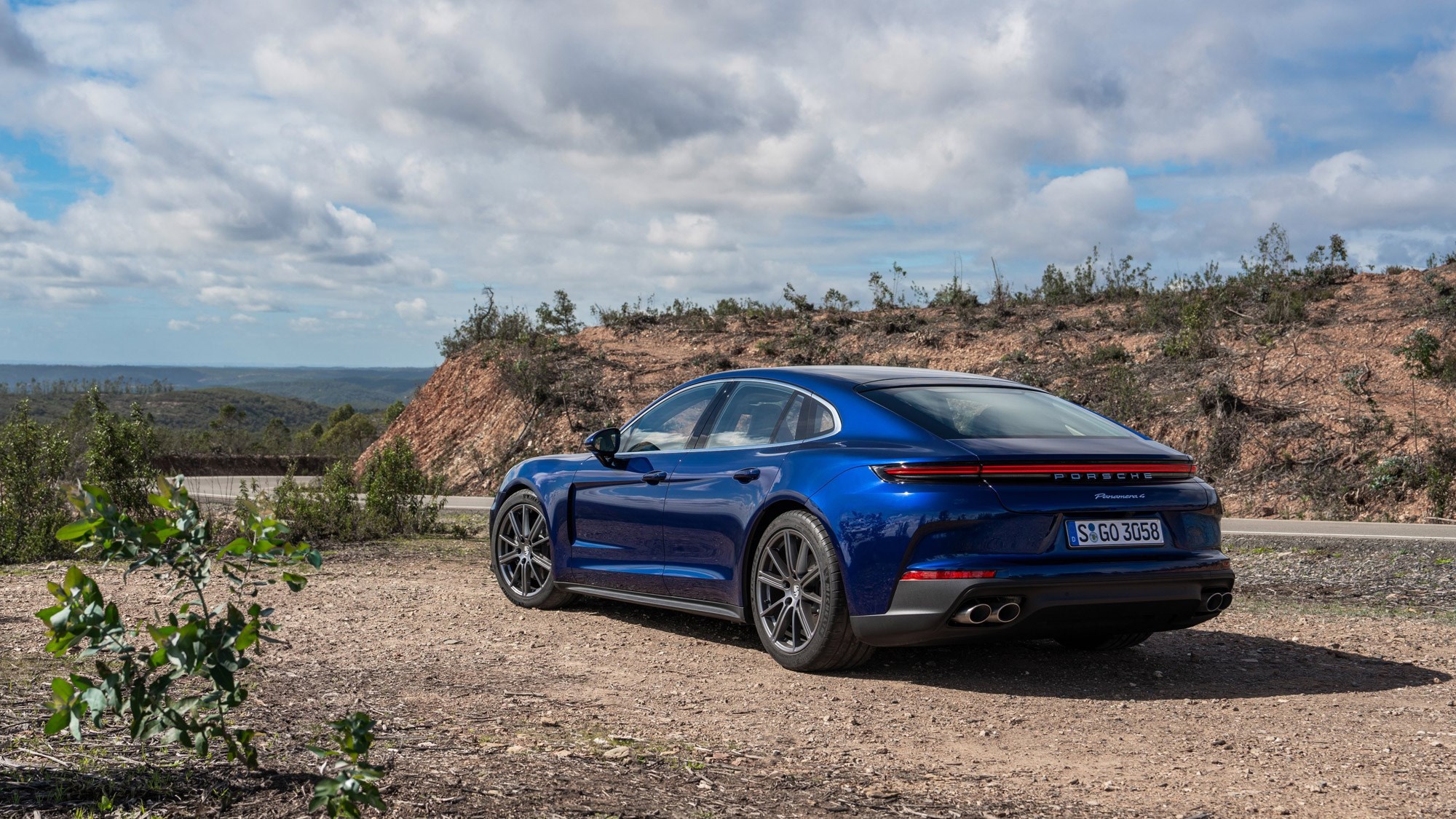
But it’s under the surface where all has changed. Air suspension is now standard across the board and replaces the previous steel setup, and on plug-in hybrid versions you can now option a clever ‘Active Ride’ setup. With this, you get shock absorbers that are controlled by electro-hydraulic pumps that work to counteract usual suspension forces, helping to keep the car flatter. You can read more about that and what it means in our separate Panamera hybrid review.
The Panamera also gets a makeover inside, with a new wraparound digital instrument cluster, new infotainment and – like the Cayenne and Taycan – the option of a separate touchscreen for the front-seat passenger. A truly pointless invention in our book.
What are the specs?
Five versions of the Panamera are available for the time being – three plug-in hybrids and two petrol options, our focus here being the latter.
If you’re averse to any kind of electrification, your current choice is the Panamera and Panamera 4, with rear- and all-wheel-drive respectively.
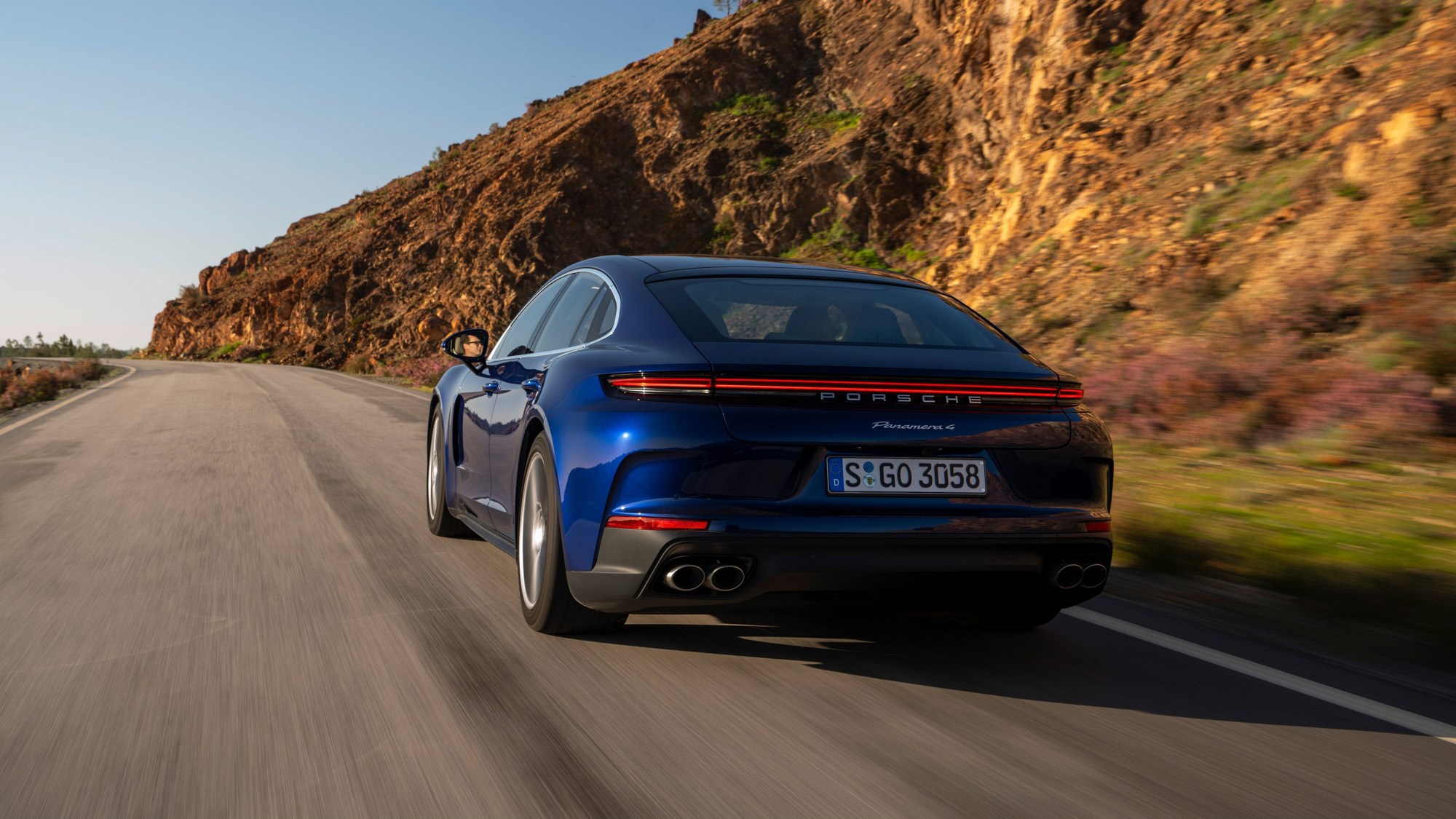
To make things simpler, each uses the same 2.9-litre turbocharged V6 petrol engine producing 348bhp and 369lb ft of torque, with a revised eight-speed PDK automatic used across the board. It’ll take 5.3 seconds to get to 0-60mph with the rear-driven car, and three tenths of a second less if you opt for the ‘4’. Both can hit 168mph maxed out.
Don’t expect lots of miles to your gallon, though, Porsche claims less than 30mpg for both, with CO2 emissions well into the 200g/km territory. Stick to a hybrid if running costs are a priority.
How does it drive?
The plug-in hybrid with its optional Active Ride setup is the headline act in the Panamera range, but our time with it so far has been limited to on track, leaving the greater road driving to the standard Panamera 4 being reviewed here.
Initially, it can seem a bit lesser, with its V6 neither having the surge of performance or the vocal soundtrack of the V8, though that is driving the two cars back-to-back, which customers are unlikely to do. But despite this, a ‘standard’ Panamera is still a wonderful thing, striking a great balance between comfort and sportiness. There’s masses of front-end bite, and it seemingly feels like it will never lose grip – you can partly thank the sticky Michelin tyres for that.
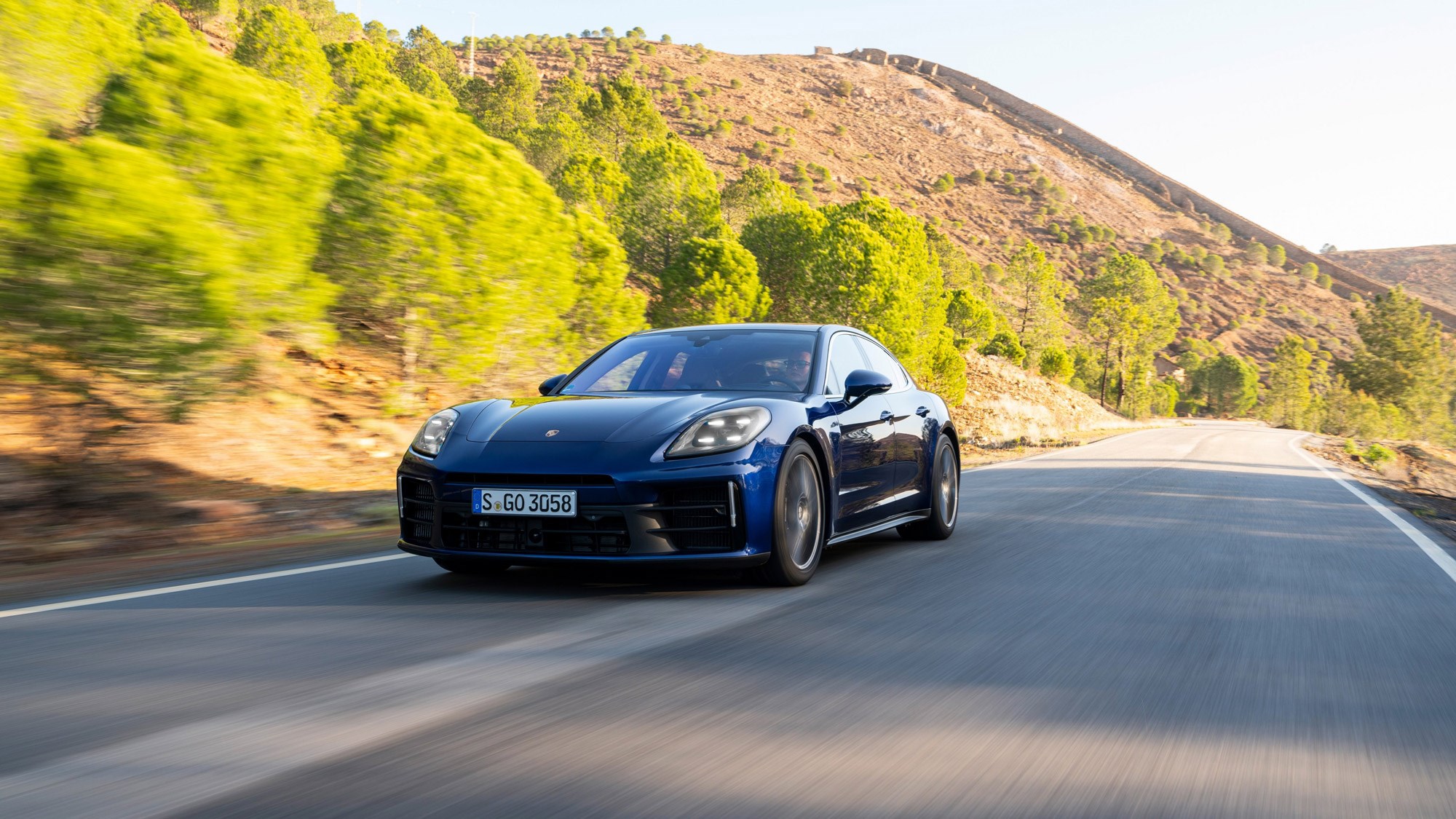
No luxury car drives as well as the Panamera when it comes to a fun road. Of course, the offset of that is that this Porsche is firmer than other limos and there’s more road noise. But for anyone buying a Panamera to drive – sounds obvious, but those choosing S-Classes are often doing so to be chauffeured around – it’s a slight compromise worth making.
What about the interior?
Porsche has ushered in many of the same changes to the latest Cayenne in the Panamera’s interior. There’s its latest generation infotainment, with more seamless connected functions, along with the aforementioned optional passenger screen. With the exception of being able to allow passengers to stream their own movies – but what passenger in a car doesn’t have a phone in their hand anyway – it just mirrors the main infotainment screen, and seems utterly pointless. I’d label the same criticism at any car with similar – not just Porsche.
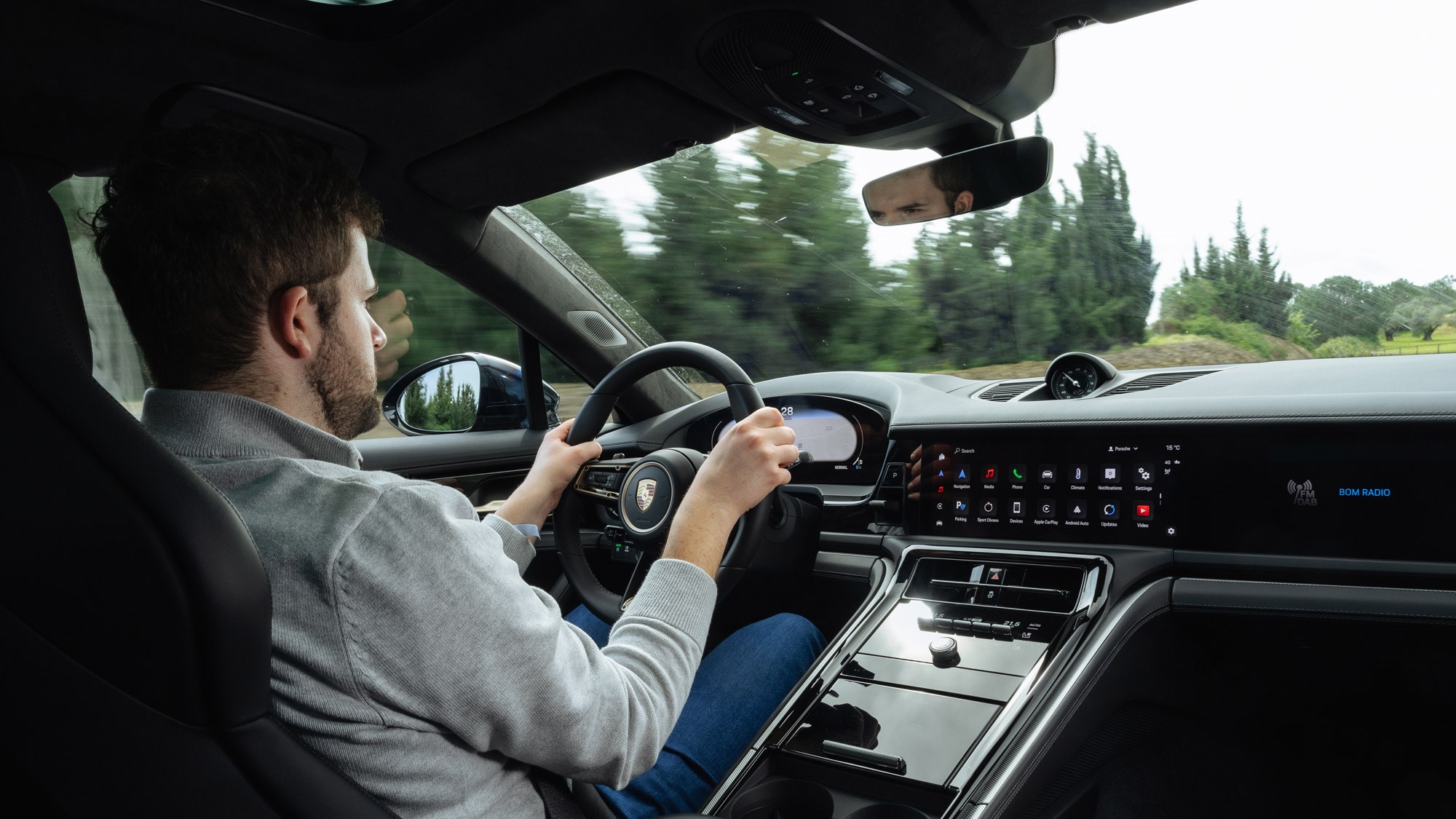
With the exception of a horribly scratch-prone centre console, the rest of the materials are excellent. Features such as the central clock and switchable driving mode controller on the steering wheel show that this is a car designed first and foremost for the driver.
But it’s surprisingly roomy for those in the back, and much more spacious than a Taycan, with plenty of head and legroom. It’s only a four-seater as standard, and you have to pay if you want a fifth seat, but it’s a pretty pointless addition given it’s not a car designed to accommodate five.
Before you buy (trims and rivals)
As with any Porsche, be mindful of getting too tick-happy with the options. It’s possible to double the Panamera’s £79,995 starting price with options. Yes, really. If you’re going for one of the hybrids, which start from £90,300, the Active Ride suspension is well worth choosing, though is still a £7,000 optional extra.
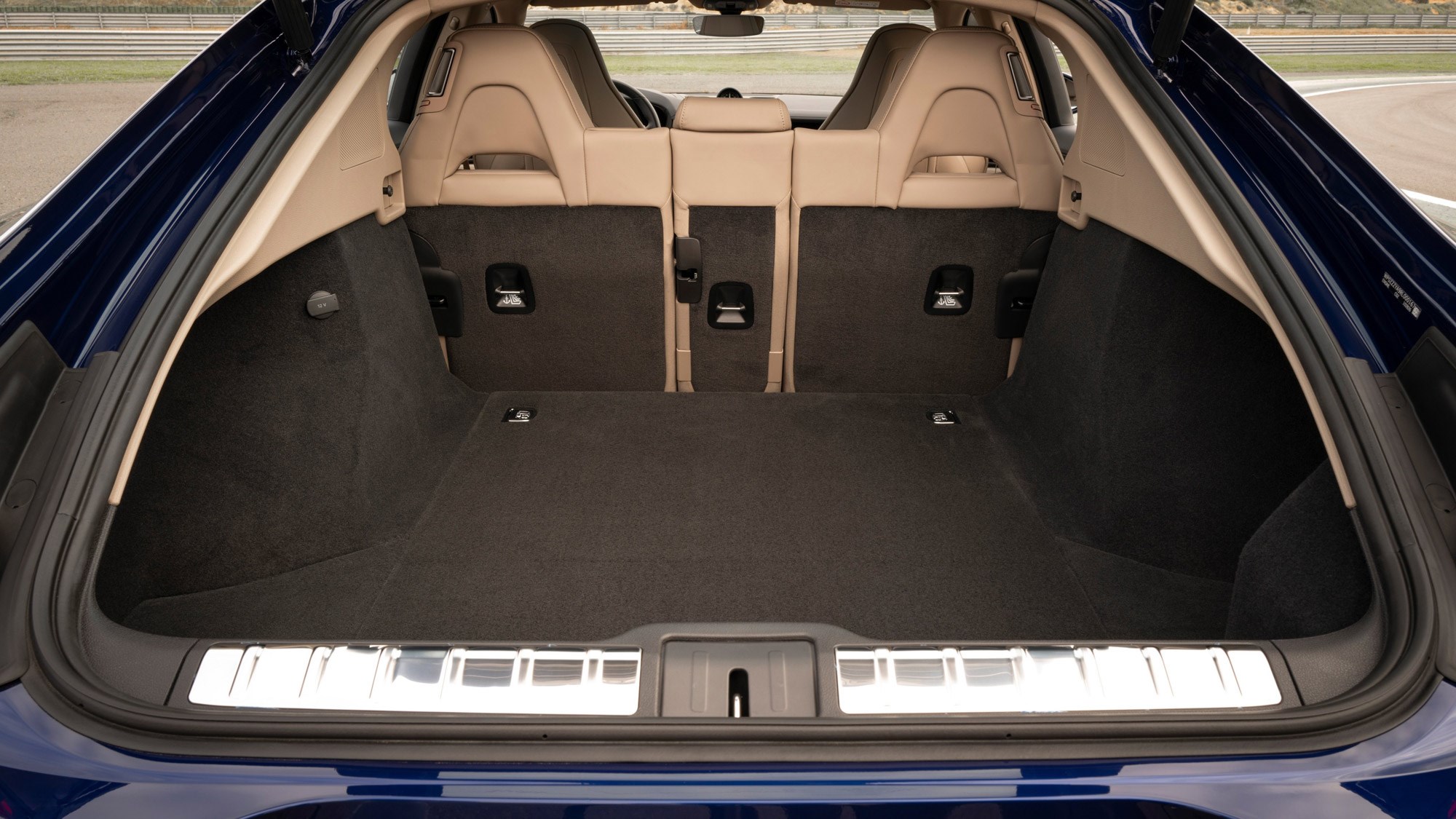
As for rivals? The Panamera is a tricky one to pigeonhole next to anything else because of its mix of luxury and sportiness – and the fact it sits in terms of size between executive cars like the Mercedes E-Class and luxury cars like the S-Class. Probably its closest competitors are the Audi S7 and BMW 8 Series Gran Coupe.
Porsche Panamera – the initial verdict
This is a very successful return for the Porsche Panamera. It’s easy to question its relevance in a world obsessed with SUVs or electric saloons like the Taycan, but few cars can match the Panamera’s ability to combine sportiness with everyday comfort.